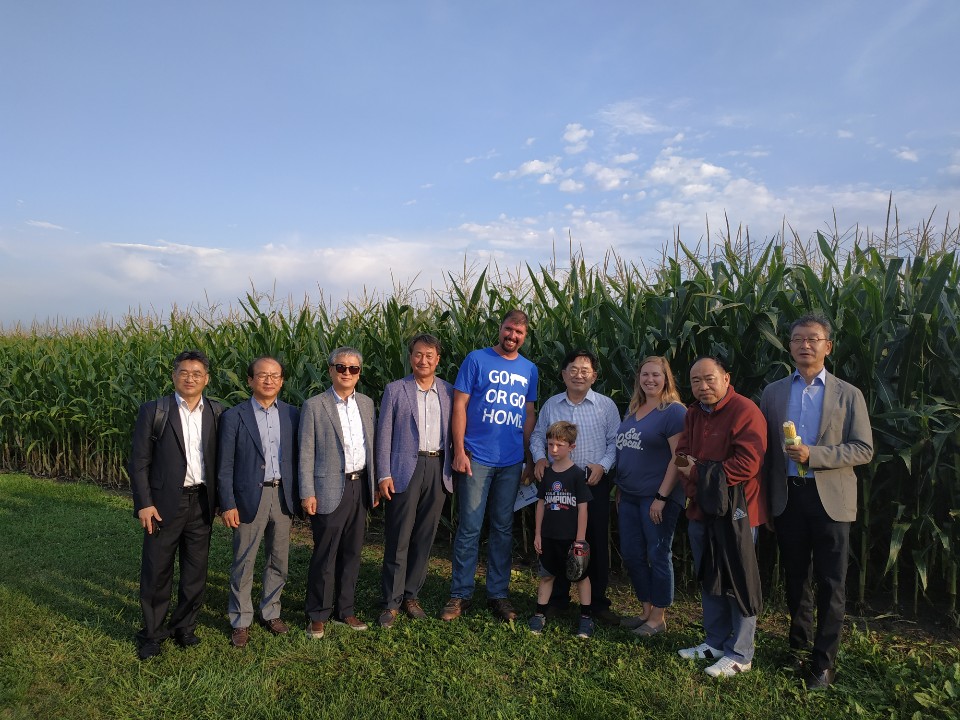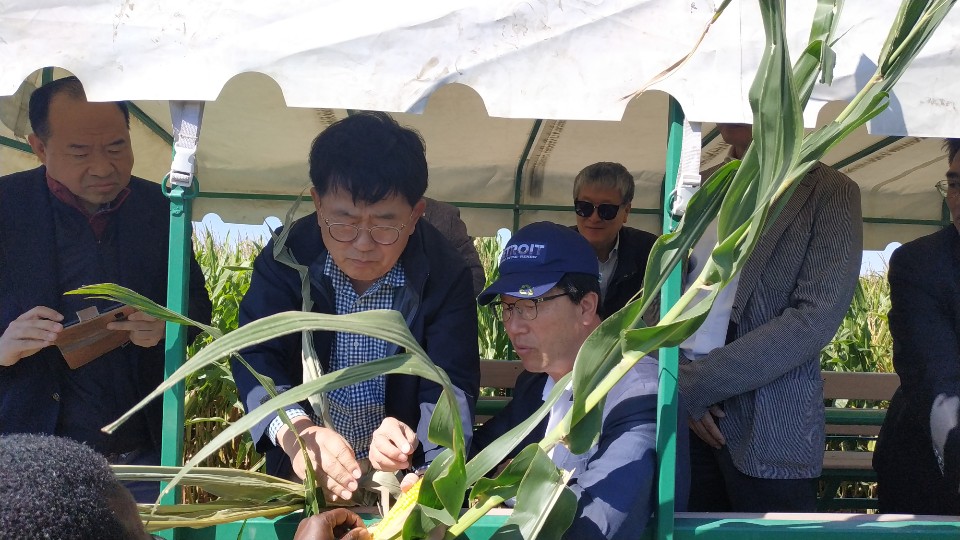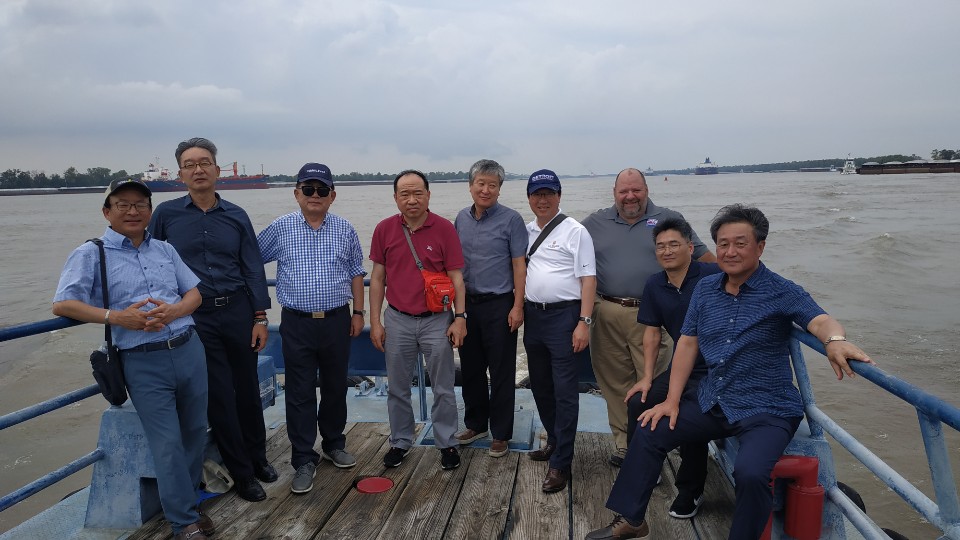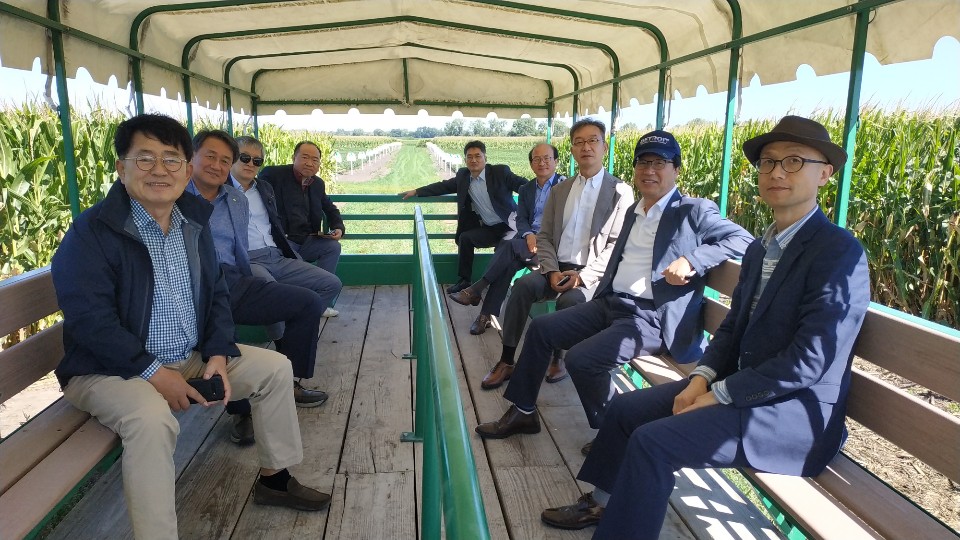South Korea is one of the largest and most loyal U.S. grain markets, but there is always something new to learn and see in the U.S. corn belt. Continuing 47 years of market development efforts, the U.S. Grains Council (USGC) organized a team of South Korean feed grain executives to travel to Illinois, Iowa and Louisiana in early September to explore the U.S. grain export system and get a firsthand look at the current year’s corn crop.
“We hoped to reassure the team members of the ability and commitment of U.S. farmers and agribusinesses as reliable grains and co-products suppliers,” said Haksoo Kim, USGC director in Korea, who accompanied the team.
“The team was initially concerned about considerable reductions to U.S. corn yields due to late planting this year. After seeing the corn growing conditions in major production states, they concluded the crop was much better than expected and expressed intentions to purchase the new U.S. corn crop.”
In addition to corn fields and farms, the team visited a grain trading house, local river elevators, grain inspection field offices, terminal export elevators, ethanol plants and life science companies.
“This program provided the leaders from our important customers the opportunity to build closer business relationships with the U.S. feed and food grain industry,” Kim said. “The team members all agreed that this mission helped them understand the value chain of U.S. corn and co-products from A to Z, and they decided to meet regularly to share market information in the future.”
The Council has worked in South Korea since 1972, and USGC programs have been instrumental in the growth of the livestock and corn-processing industries in the country. Today, South Korea is one of the top five grain-importing markets in the world, producing just 200,000 tons domestically of the 12 million tons consumed each year for animal feed, corn milling, alcoholic beverages and other uses. Corn accounts for roughly 83 percent of this overall demand.
South Korea is now considered a mature market, meaning growth in feed demand will increase more slowly. At the same time, competition from other major exporters in South America and the Black Sea is intensifying.
Under these circumstances, USGC programs and activities – like this trade team – play an important role in not only protecting existing markets for corn and distiller’s dried grains with solubles (DDGS), but also in increasing demand for other products like U.S. ethanol.
South Korea ranks as the fourth largest buyer of U.S. grains in all forms in the current marketing year (September 2018-July 2019), ranking as the third largest buyer of U.S. DDGS at 1.08 million tons and fourth largest buyer of U.S. corn at 3.74 million tons (147 million bushels). Notably, imports of grains in all forms have increased 78 percent since the U.S.-Korea Free Trade Agreement (KORUS) went into effect in 2012.





About The U.S. Grains Council
The U.S. Grains Council develops export markets for U.S. barley, corn, sorghum and related products including distiller’s dried grains with solubles (DDGS) and ethanol. With full-time presence in 28 locations, the Council operates programs in more than 50 countries and the European Union. The Council believes exports are vital to global economic development and to U.S. agriculture’s profitability. Detailed information about the Council and its programs is online at www.grains.org.


